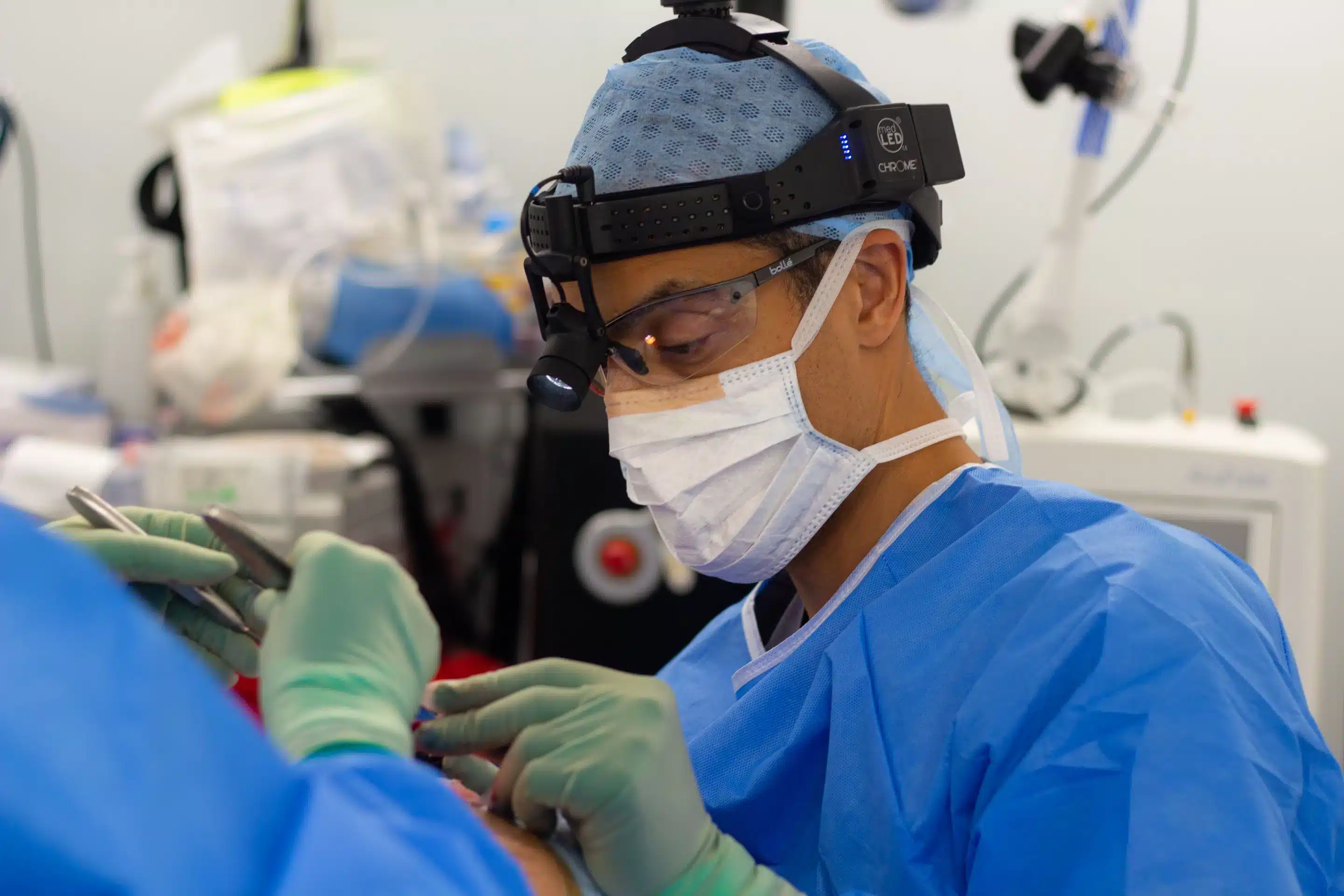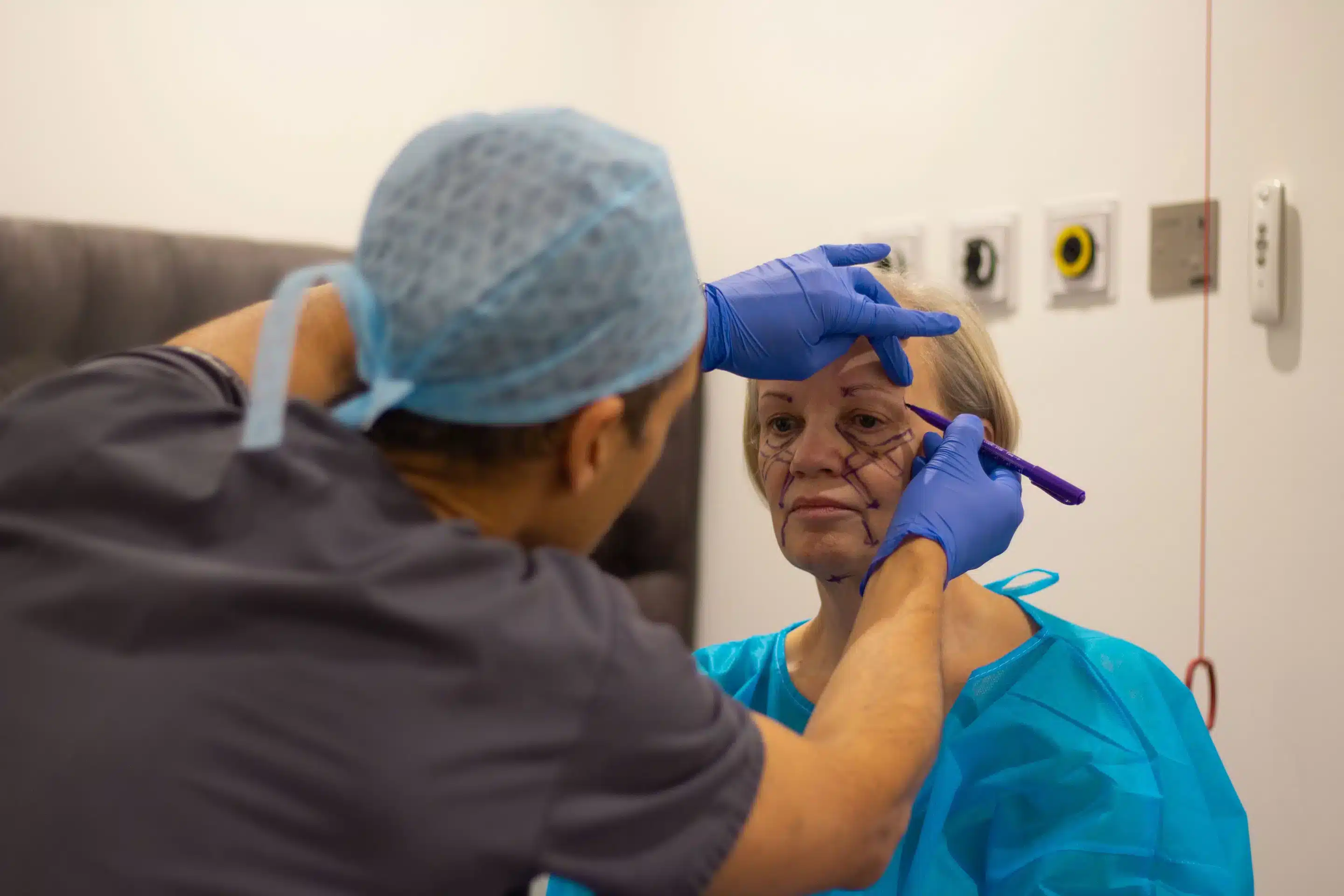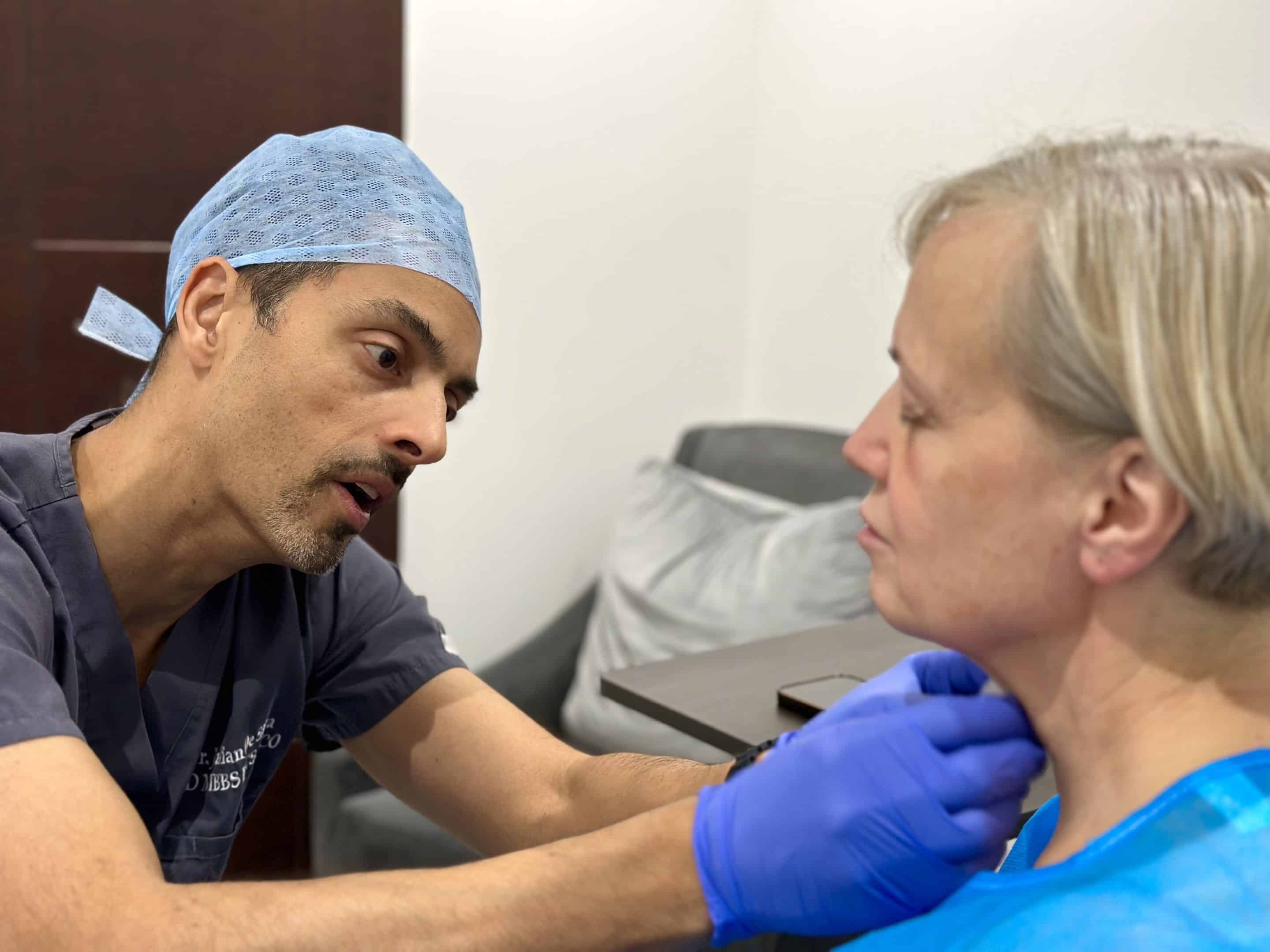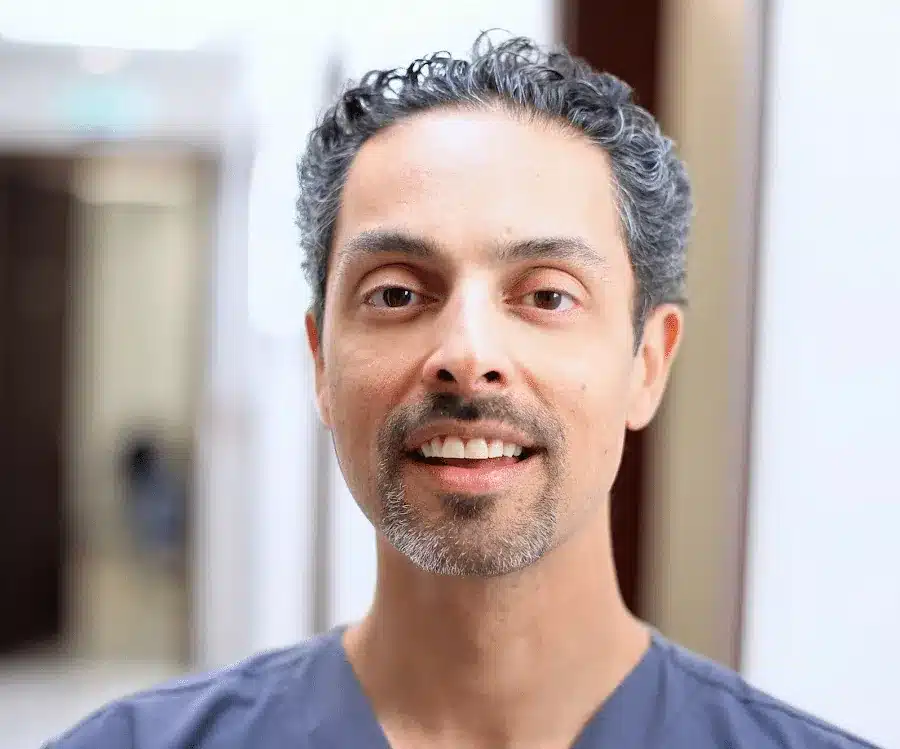
Knowing how long a facelift last lets you make an informed decision about the treatment.
Are you planning to get a facelift or have you had one? Good news because you’re in the right place. In this post, I’ll give you clear, easy-to-follow information about the whole process.
For one, I’ll give you tips on how to reduce facial swelling after surgery and how to reduce bruising after surgery. I’ll also answer common questions like how long does facial swelling last and how long a facelift lasts. I also have advice just for men in our post about the perfect male facelift. On top of that, I’ll share top tips on what can help you recover faster after facial surgery.
In short, I want to make your facelift journey as smooth as possible. So, get ready to read and let me guide you through your amazing transformation.
What Is a Facelift?
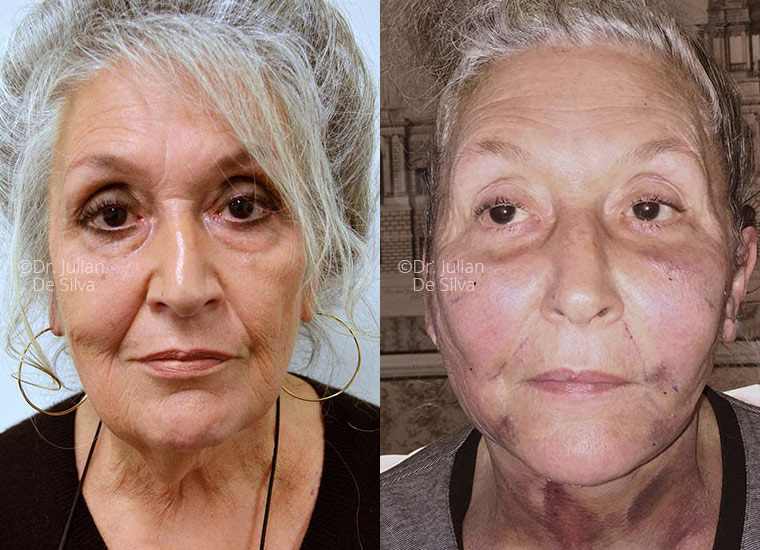
A facelift is a surgical procedure that tightens and smoothens your skin
As its name implies, a facelift is a treatment that lifts your face. Cosmetic surgeons perform facelifts to improve their patients’ skin.
Facelifts are also a well-known anti-ageing treatment. They can get rid of fine lines, wrinkles, and sagging skin among others.
Thousands of men and women have had facelifts all over the globe. This shows how effective and safe the treatment is, given that it is performed by a highly qualified cosmetic surgeon.
My clinic offers facelift surgery. Also known as rhytidectomy, patients all over the world, including celebrities, have come to my clinic to get the said treatment.
Types of Facelifts
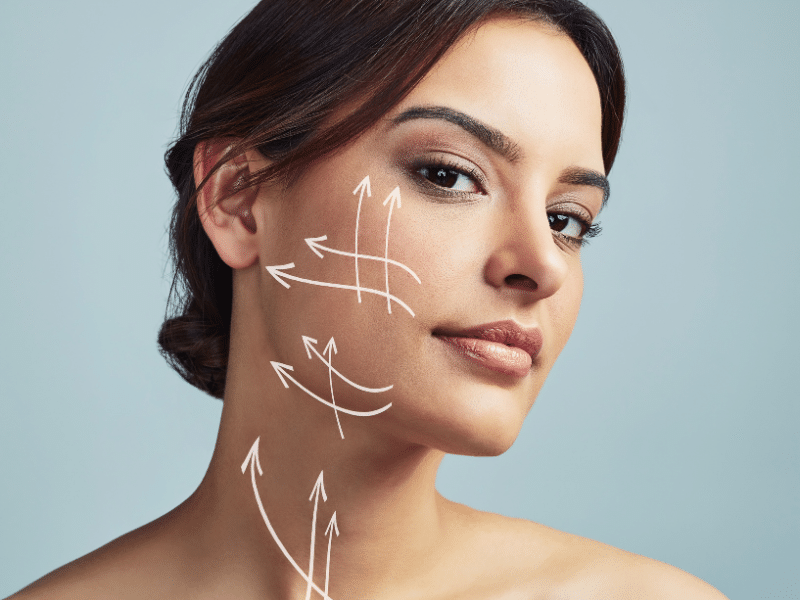
Types of facelifts include deep plane facelifts and mini facelifts.
Thanks to advances in cosmetic medicine, you can now choose from several types of facelifts. The following are the most common types of facelifts:
1. Signature Deep Plane Facelift
The most advanced type of facelift, a signature deep plane facelift involves releasing the muscles underneath the skin.
Due to its complexity, a signature deep plane facelift can only be performed by less than 5% of plastic surgeons. I am one of those cosmetic surgeons.
My clinic offers a holistic approach to deep plane facelifts, considering both the technical and artistic aspects of the treatment.
Interestingly, a signature deep plane facelift provides more natural and subtle results compared to other kinds of facelifts. Some facelift surgeons even state that a signature deep plane facelift is typically better than a traditional one in terms of providing excellent and long-lasting results.
My signature deep plane facelift also takes into account the Golden Ratio, a universal standard of beauty. This mathematical formula has been used by artists and scientists to determine the beauty of anything― from faces to objects.
2. Skin-Only Facelift
Also known as the cutaneous facelift, a skin-only facelift only lifts the skin. Hence, the procedure does not involve the tissues underneath the skin.
This kind of facelift uses traditional techniques. Many patients who prefer this type of facelift do so because the procedure does not disturb the muscles.
Furthermore, a skin-only facelift involves making a long incision along the hairline, so the cosmetic surgeon can tighten and smoothen the facial skin.
Contrary to popular belief, a skin-only facelift can be done on younger patients. In fact, skin-only facelifts work best on younger patients because ageing hasn’t extremely affected their faces yet.
In addition, a skin-only facelift produces quick results. This satisfies patients who want to see immediate results.
The procedure also causes the least pain out of the types of facelift features in this article. This makes recovery short as well.
3. SMAS Facelift
SMAS stands for the superficial muscular aponeurotic system. As its name suggests, this kind of facelift fixes the said area (the lower two-thirds of the face lying on the SMAS). This makes the SMAS facelift a type of lower facelift.
In case you have been wondering, SMAS is found deep within the skin and subcutaneous tissue. As one of the most crucial structures for the face, modifying the SMAS can improve your appearance.
However, as you age, your SMAS becomes less elastic. This results in the sagging of your cheeks. You also become more vulnerable to getting fleshy jowls and a double chin because of this.
A SMAS facelift involves tightening the muscles, trimming excess skin, and removing fat. By doing this, an SMA facelift can hamper the skin ageing process.
Moreover, an SMAS facelift is less invasive than a regular facelift. In a nutshell, a SMAS facelift can rectify hollow cheeks, fleshy jowls, a sagging midface, and a double chin.
4. Mini Facelift
A mini facelift is a modified version of a traditional facelift. The only difference is that a mini facelift only involves small incisions.
Given this, a mini facelift typically produces less dramatic results compared to a regular facelift.
A mini facelift primarily targets the lower half of the face. A cosmetic surgeon makes small incisions around the hairline to get rid of sagging skin and lift the skin on the lower half of the face.
The process also involves removing excess skin. This can help reduce wrinkles and tighten the skin.
In some cases, a mini facelift can be done with other procedures such as brow lift surgery or eyelid surgery.
Since mini facelifts in London involve small incisions, it often produces fewer and milder side effects.
5. S-Lift
The procedure does exactly what it says: an S-shaped incision. Facelift surgeons make the said incision on the hairline. The incision then continues to the front and at the back of the ear.
After the cosmetic surgeon makes the S-shaped incision, tissues will be repositioned and excess fat and skin will be removed.
Also known as an S-facelift, this procedure also removes the skin from the midface. It also involves folding the SMAS (superficial muscular aponeurotic system).
The procedure lasts for about 2 hours. You may experience discomfort after the procedure. However, this discomfort is usually minor and therefore tolerable.
S-lift can be done for both younger and older patients. However, just like the aforementioned mini facelift, an S-lift works best on younger patients.
In addition, an S-lift is a less invasive procedure and therefore has fewer risks involved, as well as a shorter recovery time.
6. MACS Facelift
MACS stands for minimal access cranial suspension. As its name suggests, this kind of facelift involves the said area.
The procedure targets the underlying muscles of the face to soften one’s mid-facial features and reduce signs of ageing such as wrinkles and sagging skin.
A MACS facelift involves making incisions from the hairline and then down to the front of the ears where facial muscles are tightened. In some cases, a cosmetic surgeon has to separate the skin from the soft tissue. In many cases, facelift surgeons remove some skin.
Just like a mini facelift and S-lift, a MACS facelift works best on younger patients experiencing early signs of facial ageing. They also work well on patients with limited skin sagging.
Side-by-Side Comparison of the Types of Facelifts
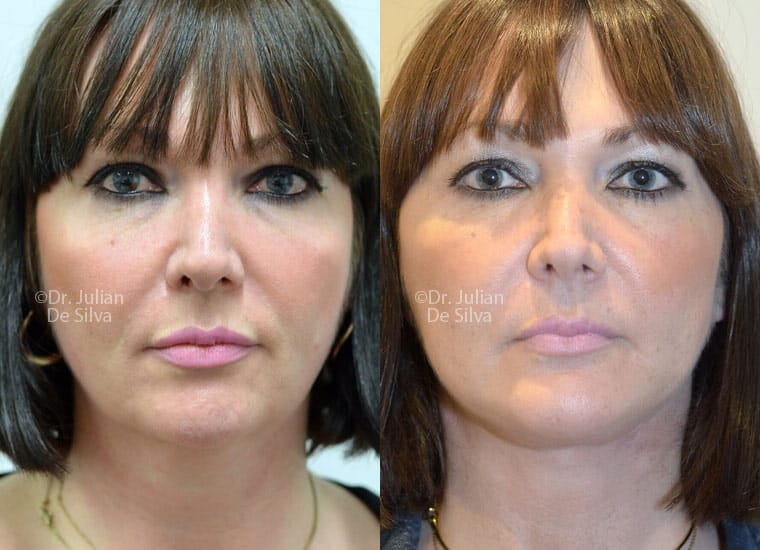
Being aware of the different kinds of facelifts helps you understand the procedures and benefits they offer.
Always remember that each face is unique. The best type of facelift is the one most suitable for you after an extensive assessment. If you need help making an extensive assessment of your face, contact me now.
To properly compare the different types of facelifts, here is a side-by-side comparison of the facelifts mentioned above:
| Recovery Time | Ideal Age | Pros | Cons | |
| Deep Plane Facelift | 2 to 3 weeks | 40s to 60s | More natural look, exceptional & long-lasting results | Bruising, swelling, & bleeding |
| Skin-Only Facelift | 1 to 2 weeks | 30s to 40s | Less invasive, visible fast results | Bruising, swelling, & bleeding |
| SMAS Facelift | 3 to 8 weeks | 40s to 60s | Less invasive | Bruising, swelling, bleeding,& longer period of wound healing |
| Mini Facelift | 1 to 3 weeks | Late 30s to 40s | Less invasive, & mild side effects | Bruising, swelling, bleeding, & scarring |
| S-Lift | 3 to 5 days | Late 30s to 60s | Fast recovery period, more natural look, less scarring, lower risks | Bruising, swelling, & bleeding |
| MACS Facelift | 2 to 3 weeks | 30s to 60s | Short surgery time, minimal side effects, & fast recovery period | Bruising & swelling |
What Makes Each Type of Facelift Unique?
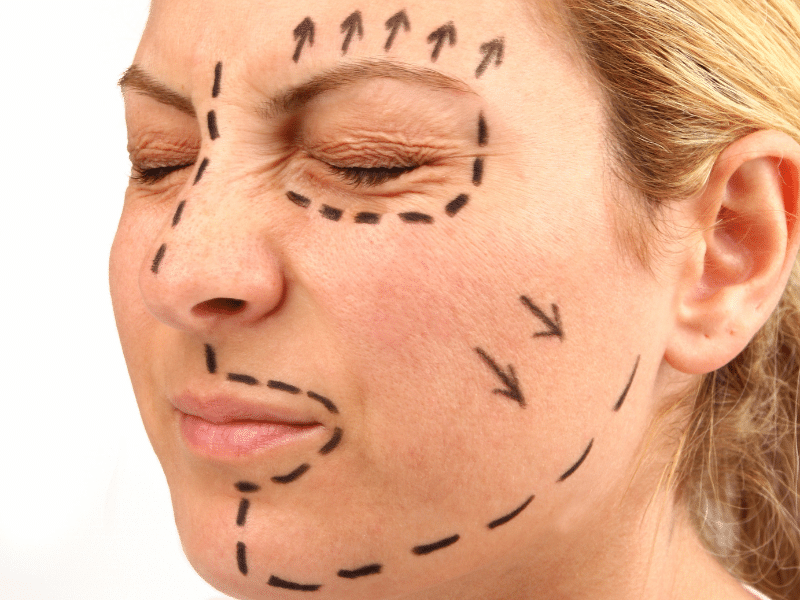
Knowing what makes each kind of facelift unique lets you find out the best one.
Now that you know the main differences between the types of facelifts, it’s time to know what makes each type unique.
-
Deep Plane Facelift
The involvement of the Golden Ratio makes my signature deep plane facelift unique. . As the most advanced type of facelift, its other unique feature is that less than 5% of plastic surgeons can perform it.
-
Skin-Only Facelift
Not disturbing or altering the muscles makes the skin-only facelift unique. Its shorter recovery time also makes it stand out from other kinds of facelifts. Also, most patients getting skin-only facelifts are young.
-
SMAS Facelift
A SMAS facelift targets a specific system, unlike other types of facelifts. This makes the said facelift unique. By adjusting one of the most crucial parts of one’s facial structure, an SMA facelift can produce dramatic results.
-
Mini Facelift
A mini facelift involves small incisions around the hairline. This makes this type of facelift unique. Additionally, a mini facelift produces the least noticeable scar out of all types of facelifts.
-
S-Lift
As you may well know, an S-lift focuses more on the shape of the incision. This is the only kind of facelift that involves a specific shape for the incision used.
-
MACS Facelift
A MACS Facelift mainly focuses on the underlying muscles of the face, rather than the skin. The cosmetic surgeon tightens the said muscles, making this procedure unique.
Best Aftercare Practices According to Each Facelift Type
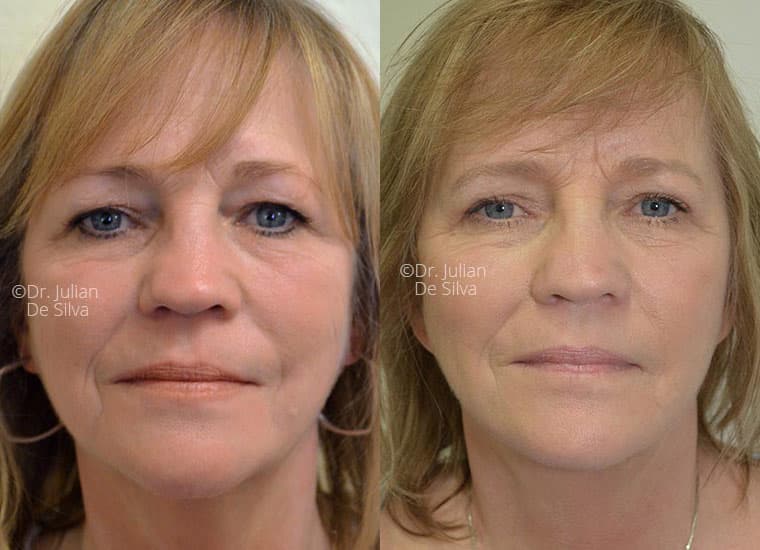
Here are the best aftercare practices according to each facelift type:
Deep Plane Facelift
Immediately after the treatment
- Compressive garments and drains are worn continuously for 1 week
One to 14 days after the treatment
- Turn your head by moving your shoulders, not your neck
- Limit moving your jaw
- Take medication as prescribed by your doctor
Skin-Only Facelift
One to 14 days after the treatment
- Turn your head by moving your shoulders, not the neck
- Limit moving your jaw
- Take medication as prescribed by your doctor
Three weeks after treatment and beyond
- You can resume light exercise three weeks after your facelift
- You can resume strenuous activity after six weeks
SMAS Facelift
Immediately after the treatment
- Your face must be wrapped using a post-op garment
- You must continuously wear the said garment for one week
One to seven days after the treatment
- Avoid making expressive facial movements
- Light activities can be resumed after three days
- Use your shoulders to turn your head
- Your stitches can be removed after seven days
- Take medication as prescribed by your doctor
Mini Facelift
One to seven days after the treatment
- Your bandages can be removed after two to three days
- Take medication as prescribed by your doctor
MACS Facelift
One day after the treatment
- After the operation, try to stay in an upright position for 24 hours
- Avoid any unnecessary strain on the face
One to seven days after the treatment
- Rest in an upright position whilst avoiding movement in the neck
- Use ice packs to reduce swelling
- Avoid smoking and exposure to secondhand smoke
Importance of Aftercare and Maintenance

How long a facelift last varies from one patient to another.
In order to take advantage of the effects of your facelift, you must pay close attention to your recovery.
Complications from facelift surgery do not occur frequently, as long as you work with a highly qualified cosmetic surgeon.
However, any surgery comes with risks. This is why it is crucial for you to closely follow any aftercare and maintenance instructions provided by your surgeon.
Speaking of maintenance, you must also use high-quality creams and other over-the-counter products to maintain the effects of your facelift.
Additionally, you must develop habits to keep your skin young-looking and healthy. These habits include cleaning your face properly, eating a balanced diet, getting enough sleep, and exercising.
Taking care of your body’s overall health on top of taking care of your skin will help you look your best and maintain the results of your facelift.
How to Reduce Swelling on Face After Facelift Surgery
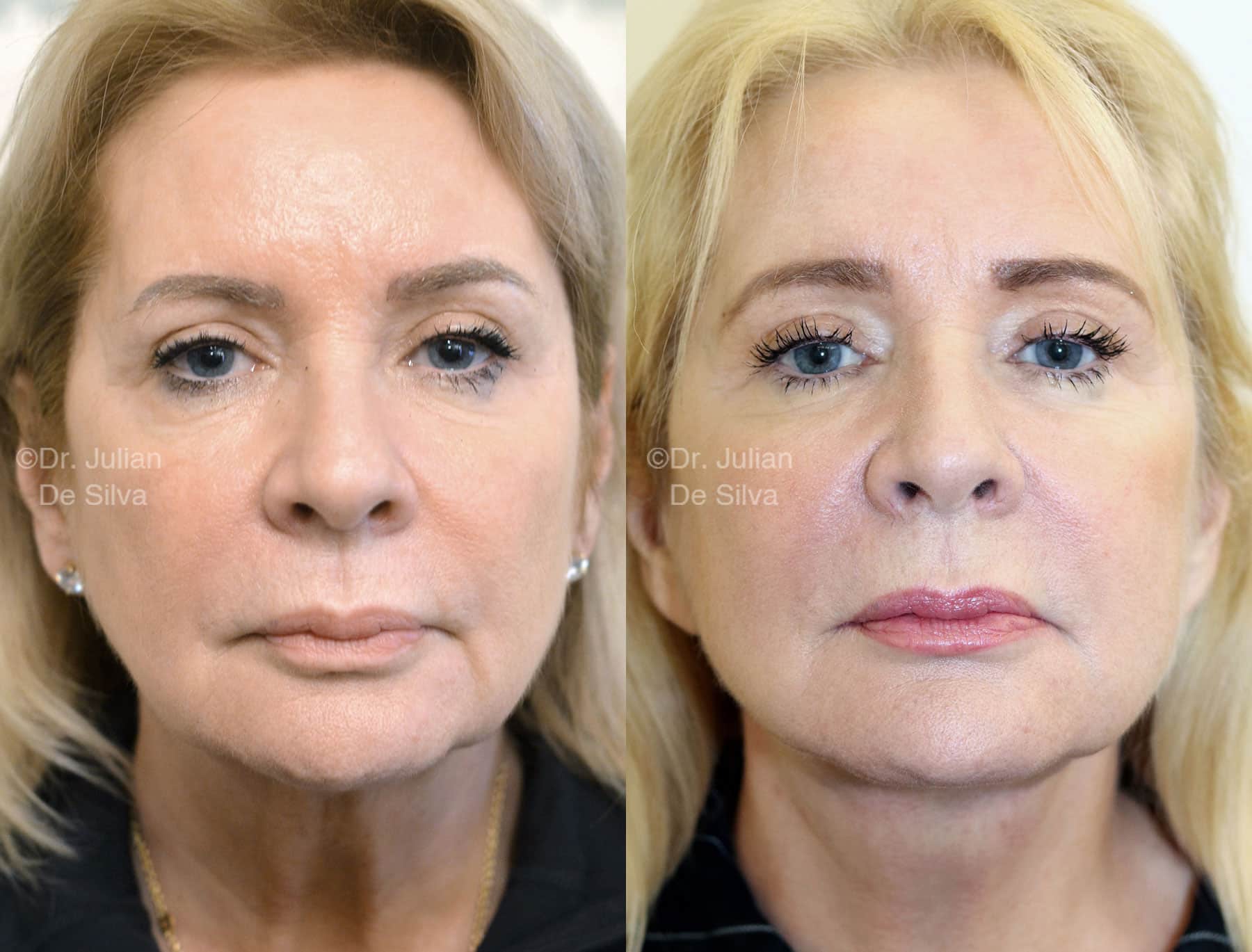
You can take medically reviewed steps to reduce swelling after facelift surgery
Here’s how you can reduce swelling after facelift surgery:
1. Use ice or a cold pack.
We don’t see athletes on the sidelines with ice packs on their injuries by chance. Lowering pain and inflammation will help kickstart the healing process. Since your body has been harmed by incisions after plastic surgery, you need to start its recovery.
For the first several days after surgery, you should apply ice packs to the affected areas for at least 20 minutes. Place a piece of cloth with ice or a cold pack on the inflamed area rather than placing the ice straight on your skin.
2. Avoid hot showers.
You should avoid taking hot showers for the first several weeks following surgery. It’s because heat can cause facial swelling.
In addition, if a powerful stream of water comes into touch with the operation site, healing might be impeded.
3. Keep your head elevated.
Even when you’re sleeping, keep your head raised once you’ve returned home from surgery. Use a few pillows in your bed to prop yourself up. As an alternative, you can sleep in a reclining chair if possible. If you choose to lie on the couch, prop yourself up using the couch’s arms or couch cushions.
Remember, facial swelling is produced by an excess of blood and fluids accumulating in and around the surgical site. Keeping your head raised will allow those fluids to flow away from the affected area. Doing so should help prevent or lessen facial swelling.
4. Do not eat or drink hot items.
Avoid eating or drinking anything hot for the first 24-48 hours after your surgery (e.g., coffee, hot chocolate, soup). The heat in your meals and beverages may actually increase the amount of swelling in your mouth.
5. Avoid smoking and drinking.
Stop smoking eight weeks before cosmetic surgery to avoid difficulties. At the very least, stop smoking and drinking alcohol after your surgery. Don’t start again until you’ve recovered. Too much alcohol and tobacco might decrease your body’s ability to heal and raise your risk of infection and allergic reactions.
Smoking reduces the quantity of oxygen in your blood, making it more difficult to avoid or recover from a bacterial infection. Meanwhile, alcohol impairs the function of your heart and immune system, which can lead to difficulties following surgery.
6. Use a warm compress after 48 hours have passed.
You can go from cold water ice and cold packs to warm compresses once the first 48 to 72 hours have passed since your operation. You can also do this whenever you observe the swelling has started to reduce.
This depends on your doctor’s instructions, but in general, you can do this four times a day, for 30 minutes at a time.
Applying a warm compress or heating pad (on a low setting) to the swollen area of your head or face can help. The warmth will aid in stimulating blood flow to the area. Doing so can reduce swelling and speed up the healing process.
7. Change your bandages and clean your incision as directed.
You may have stitches and/or bandages over an incision on your face as a result of your surgery.
Follow your doctor’s recommendations for how often you should change your bandages and how you should clean the wound. In addition, closely follow your doctor’s recommendations for keeping the area dry. Keep an eye out for any infections as well.
If you see any signs of infection, call your doctor and get immediate medical attention.
8. Make sure you get enough nutrients.
Keep up a healthy diet that includes a reduction in the amount of salt you take in. Salt is harmful to the management of facial swelling and should be avoided while you are recovering from your injury.
Vitamin K, which is a fantastic component to reduce facial swelling, may be found in abundance in greens, eggs, and yogurt, all of which are excellent sources of vitamin K.
Consuming a sufficient amount of water is also essential to achieving optimal health and ensuring that your body continues to perform at its best.
This is crucial during the period following surgical intervention. The body will be able to mend properly and will have less bruising and facial swelling after surgery if you keep your water level at a healthy level.
Find out more in our detailed blog post on how to reduce swelling after a facelift surgery.
How to Reduce Bruising After Surgery

You can take medically reviewed steps to reduce bruising after facelift surgery.
Here’s how to reduce bruising after surgery:
1. Apply some heat.
Heat can be used to improve circulation and blood flow. This will aid in the removal of trapped blood once the bruise has formed.
Heat can also be used to relax tense muscles and reduce discomfort. A heating pad or a hot water bottle can be used. As an alternative, you can enjoy a hot bath.
2. Elevate yourself.
You must also raise the wounded area above your chest. This aids in the relief of pain and the drainage of fluid from the injured area.
Pressure and compression can also both be reduced by elevating the body. This provides you with the opportunity to rest and relax, which can aid in the healing process.
3. Compress.
Wrap an elastic bandage around the damaged region. This will prevent blood vessels from leaking by compressing the tissues.
Compression can also help diminish the intensity of a bruise while also reducing pain and swelling.
4. Try arnica.
Arnica is a homeopathic herb that is used to heal bruising. It is supposed to reduce inflammation and swelling. Topical arnica ointment effectively decreased laser-induced bruising.
Apply arnica ointment or gel to the bruise many times a day.
5. Use vitamin K cream.
Vitamin K aids in the coagulation of blood. According to research, vitamin K cream can lessen the severity of bruising after a medical treatment like laser therapy.
Apply vitamin K lotion to the bruise at least twice a day to get the best results.
6. Try aloe vera.
Aloe vera has been proven to help with pain and inflammation. Make sure to use an aloe vera gel that is 100% pure. To check for additives, carefully read the label.
7. Use vitamin C.
Vitamin C contains anti-inflammatory qualities and can help wounds heal faster.
The vitamin can also be found in gels, lotions, and serums. These can be used topically. It’s also available as a supplement. You can also eat a lot of fresh fruits with vitamin C.
8. Have some pineapple.
Bromelain is an enzyme complex found in pineapple. It can lessen the intensity of a bruise as well as the inflammation associated with it.
In particular, bromelain can be obtained by eating pineapple or by taking supplements. It’s also available as a cream that you can use topically.
9. Use comfrey.
Comfrey is a plant commonly used to heal inflammation and skin problems. Comfrey cream has been demonstrated to have healing properties and can be used to treat bruises.
Apply the cream to your bruise several times a day, as directed by your physician. Dried comfrey leaves can also be used to produce a compress.
To make these, steep the leaves in boiling water for 10 minutes. The liquid should be strained out, and the leaves should be wrapped in a towel or cloth. Then, apply the leaves to the bruised area.
How Long Does Facial Swelling Last?

Generalised facial swelling and its accompanying symptoms don’t last long when you have proper medical attention.
How long facial swelling lasts varies from one patient to another.
If you had cosmetic surgery, swelling will usually go down in five to seven days. Meanwhile, bruising will dissipate in 10 to 14 days. Due to these, it could be difficult to eat at first.
If you have stitches, they may need to be removed around a week following surgery.
You’ll also probably need a few weeks to recover from cosmetic surgery. In addition, revision surgeries, such as revision blepharoplasty may require a longer recovery period.
When you can go back to work also depends on the type of surgery you have and the job you do. As a rule of thumb, you may go back to work in as fast as two weeks, if your job doesn’t require intense physical activities.
What Can Help You Recover Faster After Facial Surgery?
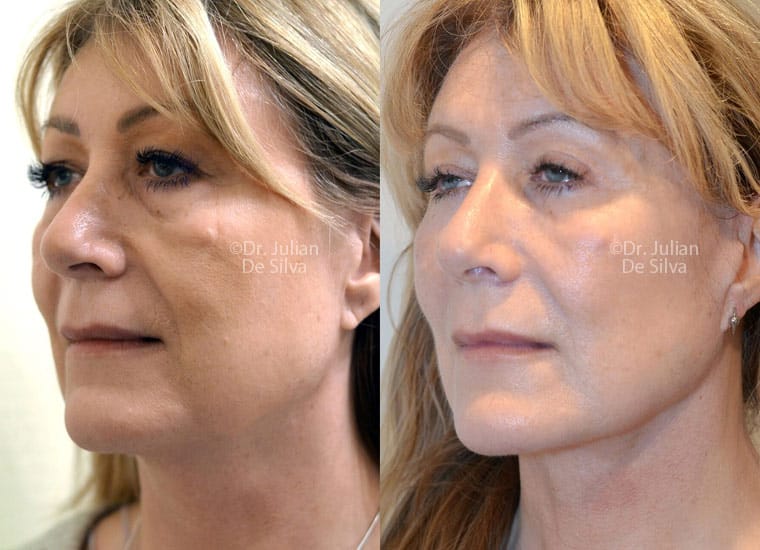
Certain measures facilitate faster recovery after facial surgery.
In this section, we will talk about the treatments that help patients recover faster and the measures you can take for faster facial surgery recovery.
The two main aspects of healing are swelling and bruising, so most of these measures are focused on reducing these as soon as possible after plastic surgery.
Treatments That Will Enhance Recovery

How long one can recover from facial surgery varies.
In general, I advise patients to take at least three weeks to rest before getting back to joining social events. However, some patients take longer. Given this, how long one recovers from facial surgery varies.
Fortunately, certain treatments can help you recover faster after facial surgery. Here are the treatments for faster recovery after facial surgery:
1. Proper Rest and Time
I highly stress the importance of resting after facial surgery. It’s because, during sleep, your body does a lot of healing.
Since your body does the majority of its healing while you’re asleep, it’s crucial that you take naps and sleep at least eight hours each night. In addition, when your body feels tired, it means that your body has some healing to do.
Moreover, facial surgery isn’t just stressful on the day of the procedure. In fact, several patients struggle with emotional or psychological issues for weeks or months after the procedure. Most of these issues are related to the procedure they had, so they need a lot of rest.
Proper rest and adequate time are needed for patients to heal mentally and accept the procedure they had. Hence, having two to three weeks of rest without any intense activities such as exercising will promote faster recovery from facial surgery. While many of my patients lead busy lives, my staff and I make sure that they take time to rest after getting surgery.
2. Oxygen Therapy
During this treatment, the patient breathes pure oxygen in a pressurised environment. Originally, hyperbaric oxygen therapy was designed to treat decompression sickness, a potential risk of scuba diving.
Over time, oxygen therapy became a treatment for serious infections, bubbles of air in your blood vessels, and wounds that may not heal as a result of radiation injury or diabetes. In the cosmetic world, oxygen therapy is used to help patients recover faster from facial surgery.
Hyperbaric oxygen therapy chambers increase air pressure up to three times that of normal air. As a result, the lungs can gather much more oxygen than they would be able to do breathing pure oxygen at normal air pressure.
This extra oxygen in your blood helps fight bacteria and stimulates the release of substances called growth factors and stem cells, which promote healing.
To function properly, your body’s tissues need an adequate amount of oxygen. Injured tissues require even more oxygen to survive. Hyperbaric oxygen therapy increases blood oxygen levels. Following repeated scheduled treatments, the temporary extra high oxygen levels encourage normal tissue oxygen levels, even after the therapy has ended.
I, Dr. De Silva, offer all patients hyperbaric oxygen therapy, which has been scientifically proven to enhance recovery after surgery. Aside from this, oxygen therapy can improve your health.
3. Light Therapy
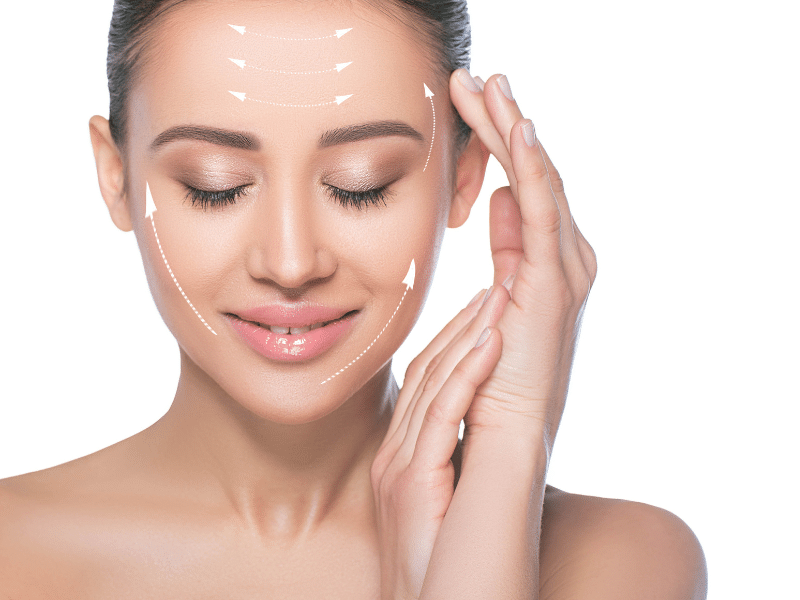
Light therapy can help facilitate faster recovery after facial surgery.
Dark spots, acne, and eczema can cause an unpleasant appearance. Some of them can even develop into serious dermatological conditions. Fortunately, light therapy or LED therapy allows you to naturally address spots and other imperfections while restoring your skin’s youthful glow.
LED (Light Emitting Diode) therapy uses light-emitting diodes for a variety of medical and aesthetic purposes. People of all ages and skin tones can benefit from this type of light therapy, which has been around for some time. Additionally, it can be combined with other procedures, such as facials and radiofrequency treatment, without any adverse effects.
To enhance healing and recovery after surgery, I offer all of my patients complementary LED therapy.
4. Manual Lymphatic Drainage
MLD or Manual Lymphatic Drainage is a gentle form of massage that helps move lymphatic fluid out of swollen limbs. However, a traditional massage should not be confused with MLD.
This treatment is specifically aimed at lymph vessels so that lymphatic fluid can flow freely. Your unaffected areas first get the treatment. As a result, the fluid moves out of the affected area. This decongests the said region.
MLD also helps open the remaining functioning lymph collectors. The treatment then helps move the protein and fluid into them. In addition, MLD helps speed up lymph fluid flow through the lymphatics.
More often than not, manual lymphatic drainage gets recommended as a treatment plan. This means that it can be combined with other forms of treatment.
My clinic helps organise MLD for all our patients to help reduce swelling caused by facial surgery faster.
5. Cold Therapy
Cold therapy or cryotherapy is another treatment that facilitates faster recovery after facial surgery. It is similar to pressing an ice pack on a swollen knee or ankle or knee. By doing this, you are relieving pain with a modern (although basic) version of cool therapy.
In particular, cold therapy can be applied in several ways such as using coolant sprays, ice packs, ice massage, ice baths, and whirlpools.
When used to treat injuries at home, cold or cool therapy refers to remedies involving frozen peas or gel and ice packs left in the freezer until needed. Interestingly, this remains one of the most basic, yet time-tested remedies for manageing swelling and pain.
Specifically speaking, cold therapy can reduce swelling, which is linked to pain. Hence, cold therapy can decrease one’s sensitivity to pain. Cold therapy can also work when one wants to manage swelling with pain, especially those around tendons and joints.
For years, the cold temperature has been known to provide people comfort, relieve them from pain, decrease swelling, and facilitate faster recovery after facial surgery. Hence, I invested in the latest technology to enhance recovery using a treatment that involves 24-hour cooling of your face after surgery so that you heal faster.
6. Laser Treatment
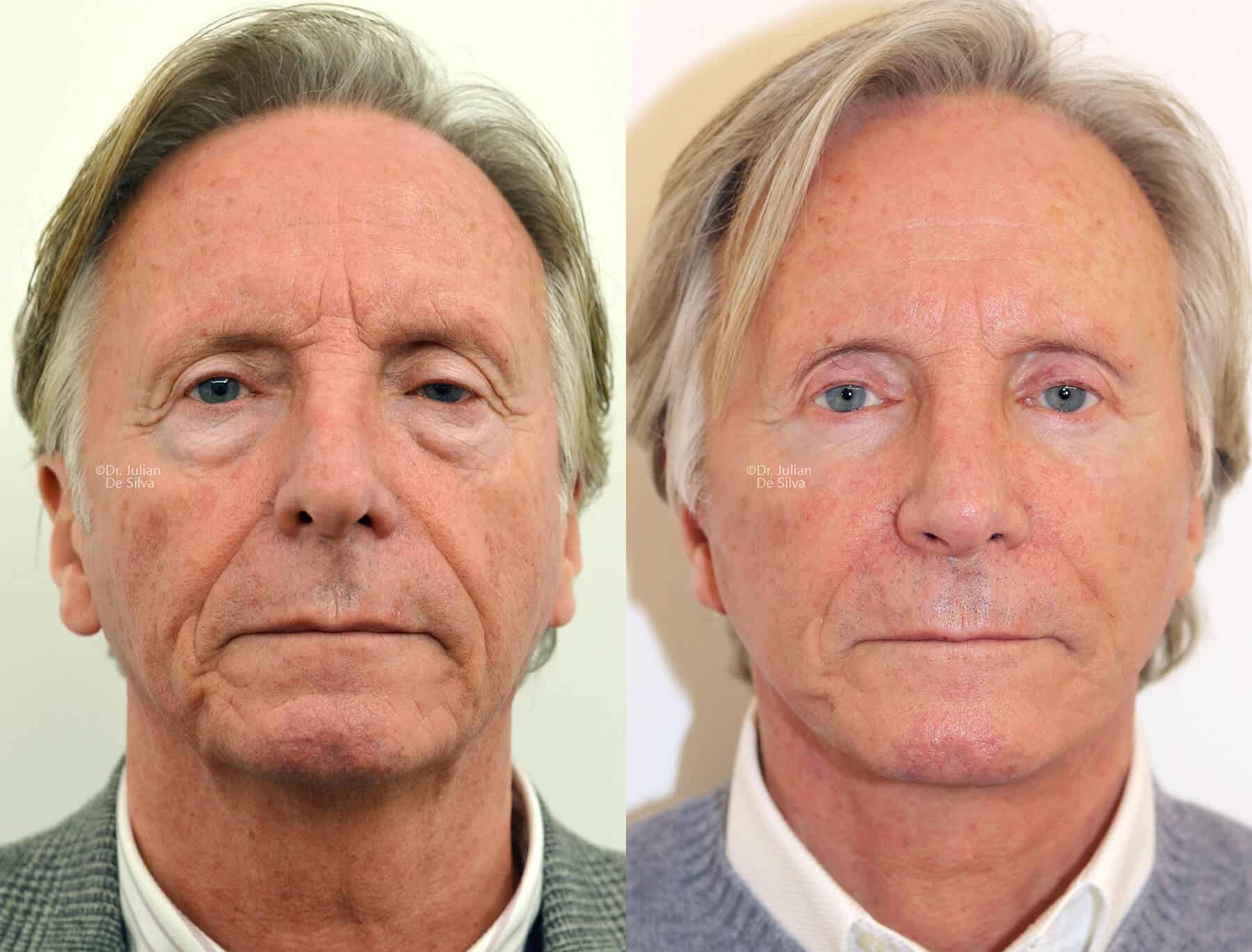
Laser treatment also helps facilitate faster recovery after facial surgery.
Laser treatment removes your skin layer by layer with utmost precision. By doing this, laser skin resurfacing prompts your body to heal itself. As a result, your body will produce new skin cells. The new skin cells that surface during the healing process give you tighter, younger-looking skin.
Laser skin resurfacing may be non-invasive, but it remains a major treatment. Hence, only a certified plastic surgeon or dermatologist must do it.
In addition, It’s an outpatient procedure. This means that you do not have to stay at the clinic overnight. Moreover, the procedure can be done alone or with other facial surgeries such as rhinoplasty, neck lift, brow & forehead lift, and facelift.
During a laser treatment, many parts of your face may be treated. These include wrinkles and fine lines around your mouth, eyes, or forehead. Moreover, the areas may be treated individually or as a whole.
For smaller areas, I usually numb them using topical anaesthesia. In some cases, sedation anaesthesia may be required, especially if the laser treatment is done with other procedures.
One laser skin resurfacing session involving certain facial parts approximately takes 30 to 45 minutes. A full-face session can take more than an hour.
After the laser procedure, I will bandage the target areas. After one day, you will have to clean the said areas four to five times a day. I will also recommend applying ointment on the target areas so scabs won’t form.
Laser treatment also helps break up bruising. Thus, my clinic has installed new laser equipment to help patients recover from focal bruising quickly.
Currently, we are also looking at introducing nutrition supplements to improve patient recovery. These supplements will only be offered only to my patients though.
Patient Measures for Faster Recovery After Facial Surgery
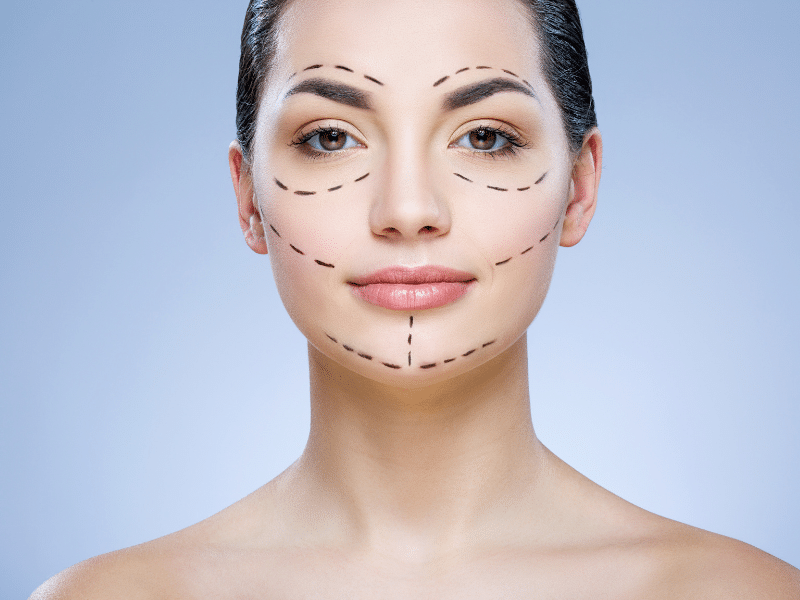
Having a healthy lifestyle helps facilitate faster recovery after facial surgery.
Here’s what you can do to further facilitate faster recovery after facial surgery:
-
Wear sun protection.
Ultraviolet rays from the sun and other sources speed up facial ageing. They also contribute to more fine lines, wrinkles, and hyperpigmentation. Hence, I advise you to protect your skin from the sun by applying sunscreen with at least SPF 30 every day.
-
Maintain a healthy lifestyle.
I also suggest that you maintain a healthy lifestyle to speed up your recovery after facial surgery. For one, avoid smoking at all costs.
Smoking decreases the oxygen delivered to your body. It also slows recovery down and makes your skin prone to scarring.
In addition, healthy living means saying no to alcohol and eating a well-balanced diet during recovery. Getting enough nutrients and drinking plenty of water to maintain daily hydration have positive effects on your recovery and your general health.
-
Avoid exercise for three weeks after surgery.
Intense physical activity raises your blood pressure. Increased blood pressure makes bruising and swelling more intense. As a result, you need more time to recover from facial surgery.
For this very reason, I recommend avoiding exercising and doing other intense physical activities for three weeks after surgery.
-
Proper hydration helps you heal.

Proper hydration helps facilitate faster recovery after facial surgery.
Make sure you have plenty of water available and in arm’s reach. Drink plenty of water to keep your body’s natural healing mechanisms working. Drinking water will also flush out the remnants of the medication you are taking, so it’s a win-win situation.
-
Have your surgeon’s number at all times and follow instructions.
You must always have your surgeon’s contact number on your phone. In addition, you must keep the contact number of the clinic where you had your facial procedure.
To start, put the contact numbers on your phone. Write them down on a piece of paper as well, in case your phone dies. Doing so allows you to contact your doctor anytime, especially in case of emergencies. It can also save you a trip to the doctor’s clinic.
After your surgery, your doctor may give you aftercare guidelines. Follow them closely. Your doctor may also recommend over-the-counter products to counteract the side effects of the surgery. Make sure to get all these products and use them as directed.
Pre-Surgery Instructions for Faster Facial Surgery Recovery
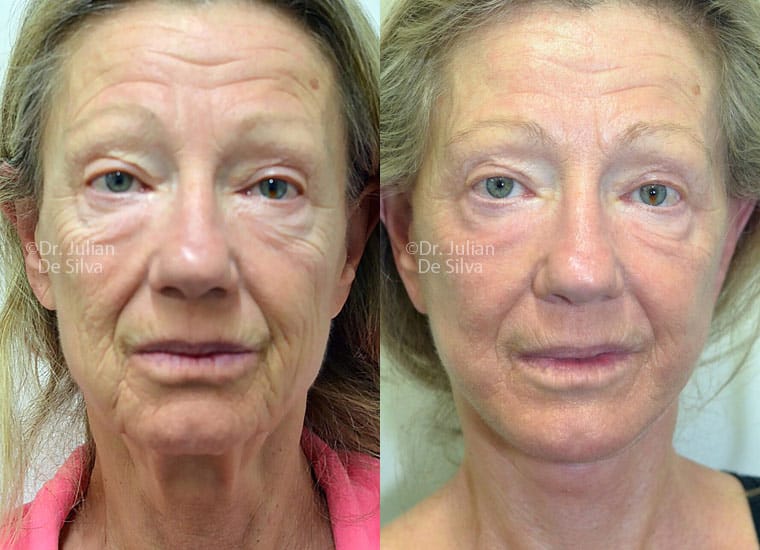
What you do before the surgery is just as crucial as what you do after the surgery.
Make sure to follow the pre-surgery guidelines I’ll give. These guidelines include the following:
- Avoid medicines or herbal treatments with blood thinners. These include non-steroidal anti-inflammatories (e.g. ibuprofen), aspirin, vitamin E, and fish oils. You must avoid them for two weeks before and after surgery. Remember, blood thinners can result in increased bruising, swelling, and risk of bleeding after surgery.
- Make sure to take your prescription to a reputable pharmacy. Tell them to fill it at least a week before your surgery. You must do this to make sure you get all the medicine you need, in case the pharmacy doesn’t have them in stock. Usually, I prescribe three to four medications (depending on your procedure), which you need to take a day or two before your surgery.
- Please do not schedule any important social events, commitments, trips, and the like for three weeks after your surgery. Resting during this period is essential. If you don’t rest properly, you will likely suffer from increased swelling and a slower recovery period.
- Alcohol and caffeine-containing beverages are potent blood vessel dilators. Hence, they promote bruising, swelling, and bleeding in the target area. Given this, I strongly advise avoiding alcohol and caffeine intake for a minimum of one week before and after your surgery. If you are a daily consumer of alcohol, caffeinated beverages, or both, I recommend slowly reducing your intake to prevent headaches.
- Avoid Viagra and Viagra-like medications (Cialis) for two weeks before and one week after your surgery.
How Long Does a Facelift Last?

Everyone wonders, “How many years will my facelift last?”
This question is often asked by those considering cosmetic surgery. Ideally, I’d love to give a precise duration, but the truth is it varies for each person.
Some might see their facelift lasting a lifetime, others find it stays for around ten years, and some might see changes in a shorter timeframe.
But why do some facelifts last longer?
Good skincare, overall health, and regular check-ins with your surgeon can make a big difference. Patients who follow post-surgery care advice usually see the effects last longer. Regular consultations also guide you on post-surgery care and address any issues or concerns.
Want to learn more? Check our detailed blog about the longevity of facelifts.
Why Post-Surgery Check-Ups Matter

It’s essential to see your surgeon regularly after your facelift.
These visits ensure everything is healing well and address any concerns.
Sometimes, a second visit might be needed to refine results or address any issues. Also, remember that the final facelift look might take a few months to settle in.Make sure to give yourself enough time to heal from your facelift surgery before you evaluate the results. By doing this, you can accurately assess your new appearance.
In addition, your doctor must actively ensure the best aftercare and your satisfaction with the results. Hence, your doctor must tell you to show up to follow-up consultations.
To help you with aftercare, here are some things to ask your cosmetic surgeon during your follow-up consultations:
- How long does a facelift last
- How long will your new appearance last
- When should you begin considering follow-up cosmetic treatments
- When should you think about getting complementary procedures such as rhinoplasty and brow & forehead lift
- Is it necessary to have a facelift done again in your lifetime
These are just some of the things you can ask your cosmetic doctor. Feel free to ask any other questions, as long as you feel that they will help you understand how to make the most out of your facelift.
Remember, it is important to comfortably discuss every question and concern you have with your cosmetic surgeon. You got a facelift to improve your life and your look, so please don’t back down from getting the results you wanted.
What Is the Average Cost for a Facelift in the UK?
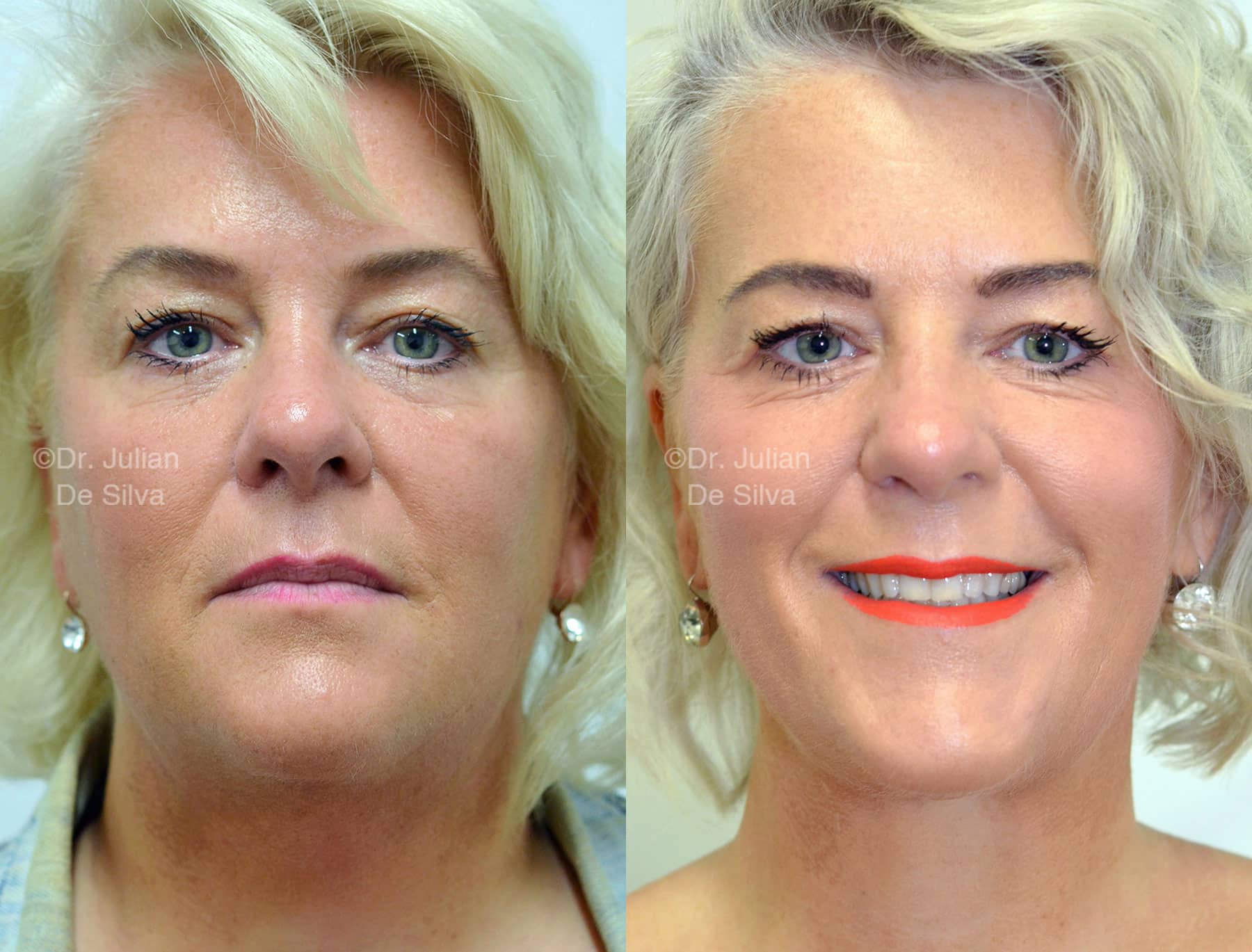
Facelifts in London are not cheap, so you have to set aside money for them.
There are many types of facelifts. These include deep plane facelifts and mini facelifts in London.
Every facelift procedure is unique and this affects how much a facelift costs. The cost of facelift UK also depends on other factors set by the cosmetic surgeon.
In addition, a full facelift cost also depends on the techniques and equipment used. The complementary procedures that go with it also matter.
For instance, some patients want to see the results they expect. This requires 3D computer modeling to happen. This adds to the facelift cost.
So, how much does a facelift cost in the UK? I can only respond with a facelift cost range.
On average, a facelift costs £10,000 to £30,000. It can increase or decrease depending on the factors I mentioned above.
Find out more in our detailed blog post on the average cost for a facelift in the UK.
What Does a Face Lift Cost Include?

Face lift cost usually includes surgeon, anaesthesia, and facility fees.
Facelift packages vary from one place to another. For instance, a general hospital might not offer the same package as a private clinic. Hence, facelift prices vary in London.
But to give you an idea of how much does a facelift cost UK, here are what facelift packages usually include:
Surgeon Fees
Fees differ from one cosmetic surgeon to another. More experienced cosmetic surgeons expectedly charge more than less experienced doctors. Despite the high cost, more experienced surgeons are worth your investment because the facelifts they do are safer and more effective.
Anaesthesia Cost
A facelift involves surgery. As you may well know, surgery calls for anaesthesia. Anaesthesia cost is always included in face lift cost unless the doctor says otherwise.
Facility and Equipment Use
You also have to pay for using the facility and the equipment. The facility and equipment need to be cleaned, so a face lift cost usually includes fees for maintaining them.
Moreover, the following can be included in a facelift cost. However, they are often not. Hence, you should ask for the inclusions before agreeing to the cost.
Depending on the clinic, facelift cost also includes consultation, medication, and aftercare fees.
Here are other things that can be included in a facelift cost:
Consultation Fees
Some cosmetic surgeons charge an upfront fee for a facelift consultation. Others do not. Depending on your surgeon, you might be required to pay a consultation fee in addition to your facelift cost.
Medication
You might need medication for recovery. Some doctors charge you for these. Others do not. Instead, they include the medicine’s price in your facelift cost.
Aftercare
Some patients need aftercare support. Others might need another consultation after the facelift. Depending on your cosmetic surgeon, you might be charged for anything related to aftercare and recovery.
At my clinic, your facelift cost includes everything mentioned above. Though we charge a consultation fee of £300, this amount will be deducted from your facelift cost should you wish to pursue surgery.
Facelift Surgery in London, UK
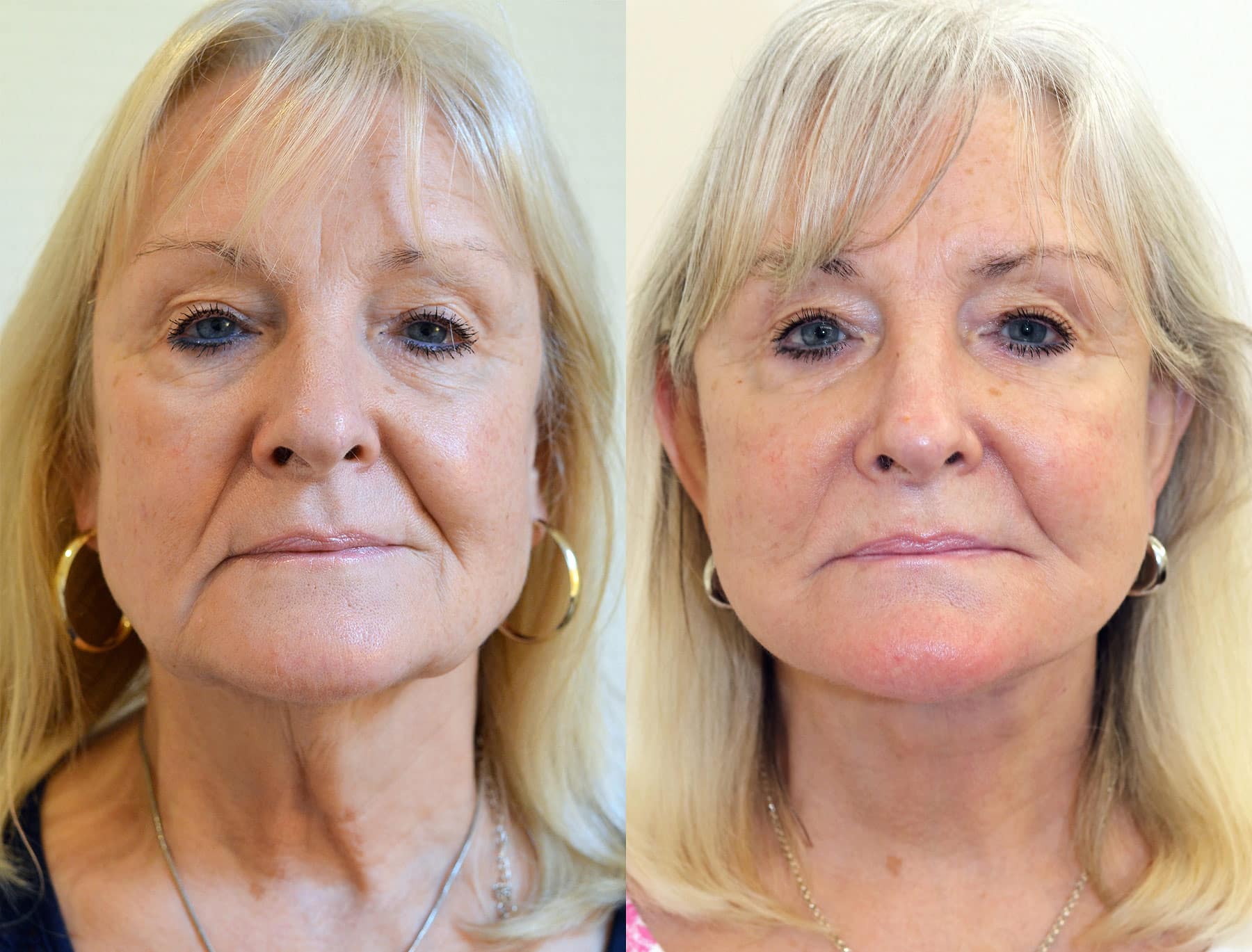
Facelifts can be done with other cosmetic treatments like eyelid surgery, fat transfer, and dermal fillers.
A facelift is a common cosmetic procedure, and one of the most popular cosmetic treatments in London. It involves the removal of excess skin and repositioning it to give the face a youthful appearance.
Since facelift surgery is a major surgical procedure, I recommend that you have someone accompany you home from my clinic so they can make sure everything goes smoothly after surgery before leaving your care completely.
It is also important to note that although this might be considered an outpatient procedure by some medical providers (including many private clinics), there are still requirements for follow-up appointments with your surgeon post-surgery. These many require further time off work than usual due to travel time between appointments.
You also have to come over for necessary dressing and bandageing changes during the recovery period.
FAQS for Neck Lift & Lower Facelift Surgery

The right surgical techniques remove excess skin and lead to natural rejuvenation.
Here are the most commonly asked questions about face and neck surgery, plus the answers to them:
What can be accomplished with neck lift surgery and facelift surgery?
A facelift and neck lift can help you look younger by smoothing out wrinkles and fine lines.
But remember, while they make you look younger, they don’t stop the ageing process.
Are You a Good Candidate for a Lower Facelift and Neck Lift?
I’ll review your medical history, assess your face, and discuss any risks. The best candidates usually have some skin laxity on their face and neck. Most patients are over 40, but younger people can also get it done.
Are All Facelifts and Neck Lifts the Same?
No, not all of them are the same. Variations range from mini facelifts and deep plane facelifts to traditional ones and more. Each serves a unique purpose. For instance, my special deep plane facelift is tailored based on individual facial characteristics. But a mini facelift, with fewer cuts, is for those wanting quicker recovery.
So, How Long Do Their Results Last?
It’s hard to pinpoint an exact duration since everyone’s skin and body are different. But, with proper care, the effects of a well-done facelift and neck lift can last over ten years
While they won’t stop future ageing, any improvement you achieve will always leave you significantly better off than you would have been had you not undergone the surgical procedures.
How do the scars look following a neck lift and facelift?
Scars from a facelift and neck lift for turtle necks should be as well-hidden as they can be to avoid being seen or interfering with your hairstyle.
Additionally, the goal is for them to be of the highest quality possible. Thus, all of my treatments are based on this principle and customised to minimise scars while maximising the outcomes of each surgical procedure performed.
How much does surgery for the neck and face cost?
Depending on your particular needs, the price could vary slightly, but I will provide you with a thorough quote after your consultation. You can book a consultation with me here.
Tips From the Top Plastic Surgeons

Facelifts involve repositioning soft tissues and facial tissues for facial rejuvenation.
Here are some tips for facelift and neck lift surgery according to the best cosmetic surgeons:
1. Read the pre-op materials.
Since the majority of surgeries are now performed as outpatient procedures, doctors have created booklets and other things for patients to read, process, and use to help them come up with any final questions before their procedure.
2. Wear the right clothes.
The clothing you choose for the day of your surgery might seem insignificant, but it’s one of the smaller, more subtle things that matter. So, you must wear clothes you’re comfortable with because the procedure will take hours.
3. Buy groceries and other items in advance.
The patient-surgeon goal should be to have everything the patient needs at home before surgery.
If a patient has little appetite following surgery, a physician may offer fruit popsicles or crackers. By buying these items in advance, you’ll be prepared for appetite suppression.
4. Take it easy, but not too easy.
You can walk for 10 to 15 minutes a day to improve blood flow as you recover. When patients can’t walk, I encourage them to remain in bed but to bend their knees and wiggle their ankles to increase blood flow.
5. It’s okay to ask if things are normal.
I want you to have a smooth recovery. Keeping lines of communication open and feeling comfortable enough to raise embarrassing questions is part of recovery.
Essentials for Surgery
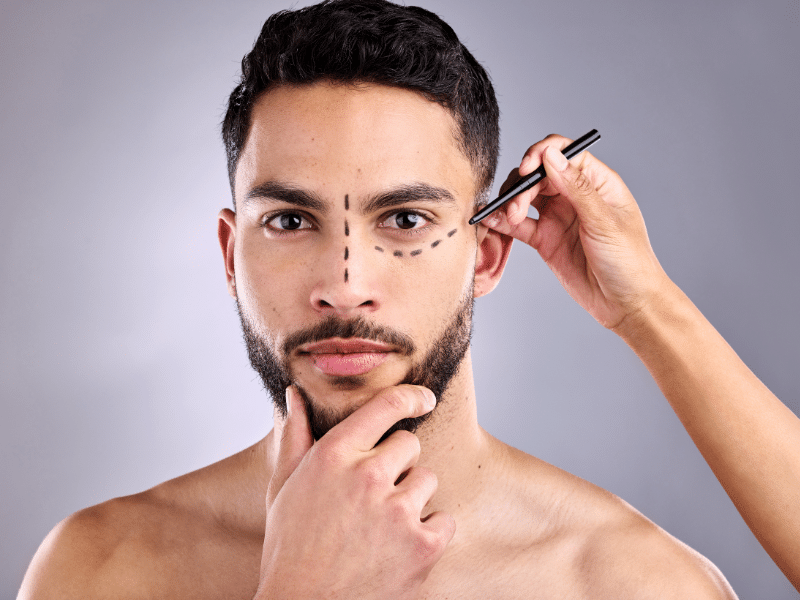
In some cases, excess fat has to be removed from the neck area during neck and face surgery.
Whether you’re getting a mini facelift or any other kind of facial surgery, you should take note of the following:
1. Schedule your facial surgery when you’re healthy.
Patients must be healthy for any cosmetic treatment. Active infections or underlying health conditions raise complication risk for invasive surgery.
To ensure you’re in good health, I will ask about your medical history when you visit. Please list any drugs or supplements you take, so I can determine if cosmetic surgery is safe for you.
2. Learn what to eat before the surgery.
A healthy diet before surgery may speed up recovery. Fruits, vegetables, proteins, and nutrients assist in healing and combating infection.
3. Stay hydrated by drinking water.
Always hydrate before surgery. Water supports tissue health, digestion, and circulation.
To hydrate and cleanse the body, drink at least eight glasses of water every day. Patients recovering from cosmetic surgery should also always keep a bottle of water in hand.
4. Stop smoking for at least a few weeks before surgery.
Tobacco slows down recovery. Smoking might interfere with blood flow to the surgery area, hindering healing.
So, you must stop smoking to recover better. Patients should also stop smoking many weeks before and after surgery for better results.
5. Prepare a space to get plenty of rest.
Patients should make arrangements for where they will rest and sleep.
Either your bedroom or your living room will do, but you’ll want to be in a cosy, peaceful area. Gather all the supplies you might need such as magazines, books, and nutritious snacks. You should also have my contact information in case you need to contact me.
6. Get a support system at home.
In order to monitor your development and ensure that you take any recommended medications, that person may need to stay at your house with you.
You may experience side effects, such as swelling or bruising in the treatment region, for the first two to three days following surgery. A helpful family member or friend can assist with any domestic duties, as well as drive you to any necessary follow-up appointments.
7. Follow all post-procedure instructions.
All of my patients receive thorough instructions on how to recuperate from plastic surgery because side effects are likely to happen right after your procedure.
It is crucial to adhere to all of these guidelines in order to guarantee a full recovery and remove any potential hazards or issues during the healing process. For instance, we can provide you with knowledge regarding wound care to prevent infection or potential scarring.
Moreover, please don’t be shy to ask me detailed questions regarding the treatment, such as how long recuperation takes for plastic surgery.
Approach to Mini Facelift and Facelift Procedure

Typically, a facelift entails lifting the skin and tightening the muscles and underlying tissues.
It is also possible to sculpt, remove, or redistribute fat from the face and neck.
The surplus skin is then removed and the facial skin is re-draped over the freshly realigned facial contours. Next, the wound is stitched or taped together.
The techniques used during facelift procedures will determine the incisions. Usual options include the following:
- Standard facial incisions for facelifts begin at the hairline near the temples and travel down around the front of the ears. Then, they end behind the ears in the lower scalp. To enhance the appearance of your neck, a cut may be performed beneath the chin.
- A restricted incision is a smaller incision that starts in the hairline directly above the ear, circles the ear, but does not go all the way into the lower scalp.
- The incision for a neck lift begins in front of the earlobe and wraps around the ear into the lower scalp. Additionally, a small incision is created beneath the chin.
In general, a facelift takes two to four hours, but if other cosmetic operations are done concurrently, the time may be extended. After the procedure, the wounds will be stitched back.
Surgery Safety Is a Priority
When choosing a plastic surgeon, it is important to find someone you are comfortable with and who has the experience to perform the procedures you need. It’s also crucial that they have a good reputation and have been trained by accredited surgeons.
If you have any concerns about your chosen surgeon or surgery, ask for their qualifications and references. You may want to get in touch with previous patients as well as other healthcare professionals who can provide advice about the surgeon’s practice.
Tips for Cosmetic Surgery Abroad
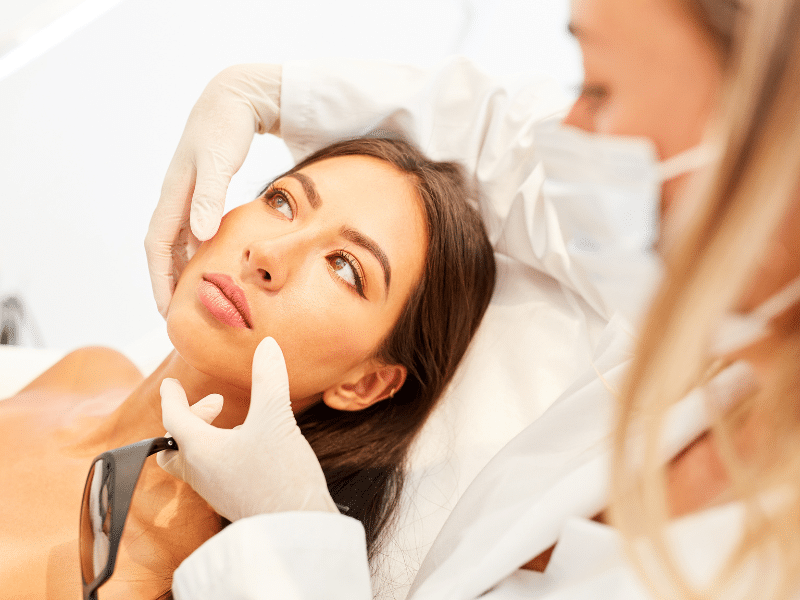
Alternative treatments for facelifts exist, but their results are not as long-lasting.
Here are some tips for cosmetic surgery abroad:
1. See if there are any language barriers that can prevent good communication and discussion about your procedure.
Make sure your surgeon can communicate in English or another language you can understand. This will enable you to ask any questions you may have and allow you to completely discuss your operation.
2. Calculate the costs.
Learn about all the anticipated and potential charges. If anything goes wrong or if you need to undergo surgery in the future, will you have to travel internationally?
Find out what will happen if you decide to change your mind after paying some or all of the charges.
3. Choose the right surgeon.
The same abilities and experience that you would search for in a surgeon in your country should be considered when selecting one from the UK. Additionally, the surgeon must be completely insured to perform the treatment. You can request to examine the insurance information for your surgeon.
After the procedure, you might need to make a long trip home. The aftercare process is not always simple. If there are any issues following your surgery (e.g. significant skin laxity, sagging skin, and extreme headache), it will be harder to contact your doctor abroad.
Hence, you must choose a surgeon abroad with a lot of experience and credentials to minimise risks.
4. Research the procedure.
Examine the consultations, the procedure, the dangers, the complications, and the aftercare that will be involved.
You can also ask your doctor about the surgical treatments and any alternative nonsurgical treatments such as nonsurgical facelifts.
5. Consult with the surgeon.
Before you agree to have surgery, make sure you speak with the surgeon who will conduct the treatment. You should only receive advice on the procedure from that surgeon. Never hesitate to ask questions.
Reputable medical professionals will be pleased to talk with you about anything. Watch out for hospitals and doctors that won’t talk to you about the specifics of the procedure.
The Perfect Male Facelift
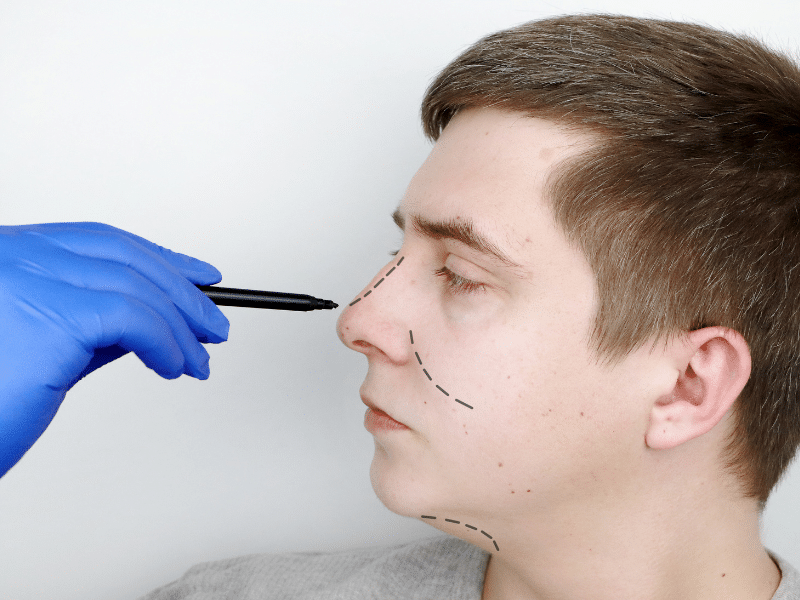
Generally, male patients want to maintain their masculine trademarks after a male facelift.
Here are the things an ideal male facelift should have:
-
The Technique of the Surgeon
In order to complete a facelift and neck lifting procedure, most surgeons use various types of techniques. Additionally, surgeons work on hiding the facelift incisions in natural creases and curves.
-
Location of the Incision
By placing the visible portion of the incision inside the ear canal, the incision and scars can be hidden. The scars can also be hidden through the tragus― the opening behind the little lump in front of your ear.
An approach to the minimised movement of beard growth is required for people with marked skin laxity. The optimal outcome must be discussed by the doctor to his male patients.
-
Multiple-Layered Meticulous Closure
Once the superficial skin stitches get removed, the multiple layered skin closure ensures that the deep stitches will support the soft tissues. This key process prevents widened and unattractive scars in many types of facelifts including a mini facelift in London.
-
Deep Plane Face Lifting Technique
SMAS (superficial musculoaponeurotic system) or deep muscle tightening is a process where deep tissues beneath the skin are lifted. It’s essential to do this process before skin closure to produce natural-looking results. Additionally, this deep plane facelift technique helps avoid tension on the skin.
-
Stitching Methods
Various methods and stitching methods can be used to close the skin. To save time, some surgeons use staples. Despite the benefit you get by saving time, this technique can leave marks and unsatisfactory scars.
However, some doctors, including me, Dr. Julian De Silva, avoid the use of staples. It’s because the best healing comes from the use of fine sutures instead of staples.
-
Regenerative Medicine
To enhance scar resolution, I, Dr. Julian De Silva, pioneered and developed the use of signature regenerative medicine techniques including the use of 3D telescopes to conceal scars.
Conclusion
I hope this blog has been helpful. Whether you’re considering a facelift or are already healing from one, this guide is here to make things simpler.
We’ve covered how to handle swelling and bruising after surgery, and how long these might last. We’ve also shared tips to help you recover faster. For the men reading this, I hope our advice about the perfect male facelift has been useful.
Remember, every facelift journey is unique, but this guide is designed to help you at every step. If you have more questions or are ready to take the next step, don’t hesitate to book a consultation with me. I can give you personalised advice and answer any other questions you might have.
Getting a facelift is all about helping you feel more confident and happy. Contact us to book a consultation now and start your journey to a better, more confident you. All the best!

